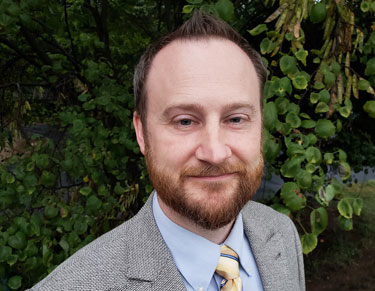This article is the fifth in the 2021 Fresh Perspectives series, presented by the de Beaumont Foundation. Published in concert with APHA’s 2021 Annual Meeting and Expo, the series showcases viewpoints from a range of public health professionals around social connectedness.
Aaron Davis, MBA, MPA, director of the Center for Public Health Initiatives at Wichita State University, discusses the importance of making public health accessible and understandable to partners and community members. Closing gaps in understanding can help public health better achieve its objectives, according to Davis, who is a de Beaumont 40 Under 40 honoree and PHRASES fellow.
Throughout my career in public health, talking about my profession has proven challenging. And I’m far from the only practitioner with this experience.
In his TED Talk on inspirational leadership, author Simon Sinek calls for infusing connection, passion and purpose into our conversations. These hallmarks are too often missing when we talk about public health practice.
Public health is a lot of things. It is a field of study and a set of programs, but it is also a philosophy. It is vast, complex and ever-changing. Public health is difficult to summarize, but to build support for our field, we need to make it accessible and understandable.
The de Beaumont Foundation and the Aspen Institute launched the Public Health Reaching Across Sectors initiative to give public health professionals strategies and tools to communicate more effectively and develop cross-sector partnerships. As a PHRASES fellow, I learned the importance of effective communication in achieving public health goals, especially when relating to people with little understanding of what we do. 
Most people limit their thinking about “health” to health care, the absence of illness or metrics such as blood pressure and cholesterol levels. Public health practitioners go further upstream, taking into account all the environmental and social factors that influence health and well-being. The more that people understand why population health matters, the more we’ll be able to build buy-in for our work and partner with others.
I admit that I sometimes wear public health “blinders” — I’m so passionate about what I do that I expect people in other sectors to immediately get on board with what my colleagues and I have to offer. But to make real connections with partners and community members, we need to adapt our approach and our framing. We need to start by understanding where they’re coming from and what they most care about. One tactic I’ve learned from my PHRASES fellowship is to lead with questions. Instead of making assumptions about what people want or need, I begin every conversation with a list of questions to ensure that we’re working from a framework that will allow us all to be successful.
PHRASES has shown me the need to be intentional in my communications. Just because you’re an expert in public health doesn’t automatically make you an expert in related sectors, such as housing, education, business or health care. We need to communicate with representatives of these sectors in terms that resonate with them. They need us to explain public health concepts in ways that are simple and relatable, even if that framing doesn’t come naturally.
PHRASES suggests several framing elements, or communication devices, that enable public health practitioners can use to close gaps in understanding with other sectors. For example, if you think of your community as a building, public health is a major part of the foundation. Without ensuring a strong and stable foundation, the building will deteriorate.
Some humility is required for practitioners to accept that not everyone automatically understands the significance of our field, nor will they instantly want to work with us. We’re a passionate group, and we may get disheartened when others don’t match our enthusiasm. But the more that we strive to communicate well, the more likely it is that people will want to join our work. Better communication represents a critical first step toward that goal.